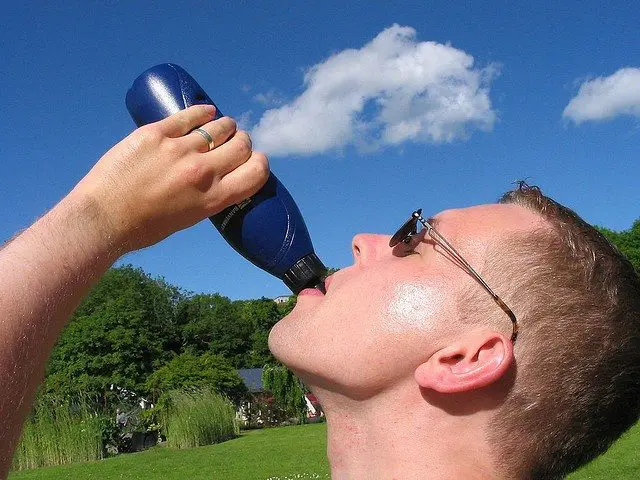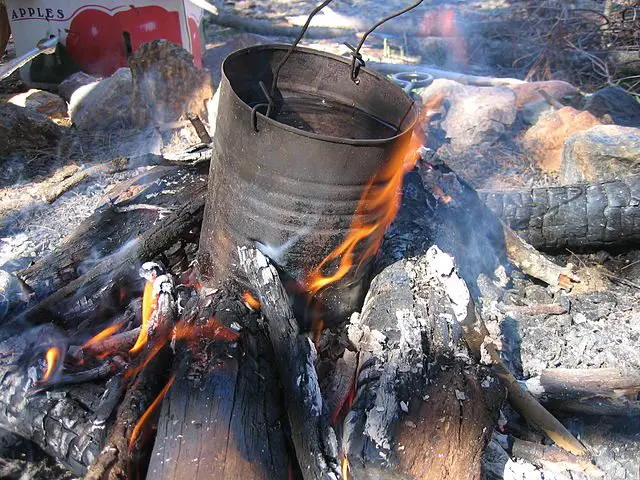Staying Hydrated: 5 Methods Of Water Purification

Ever heard the expression “water is the tonic of life”? Well, let us be brutally honest, without water there is no life. In normal conditions, an adults water intake should be approximately 3 liters a day. In hotter climates, this will rise sharply to 10 liters per day per person due to excessive sweating. It doesn’t stop there though; you need to consider water for cooking and also for washing.

Why Do We Need To Be Concerned?
There are plenty of organisms and chemicals found in water that can cause the human body problems. Bacteria, viruses and parasites can all contaminate water and they all can be killed off if treated correctly. Removing sediment is must be completed first, as sterilisation through boiling water or adding chemicals is only useful of all sediment is removed.
How Can Sediment And Organic Matter Be Removed From Water?
If the water that you collect has any form of suspended matter or sediment, then this needs to be removed before all else. One of the most popular methods for this is to use a Millbank bag to pass the water through. The Millbank bag is hung up over a water container and through gravity, the water passes through its woven material, but any sediment remains trapped within the bag. The bag itself is hard wearing and comes in many different sizes dependent on your needs.
An alternative to the Millbank bag is letting the water stand for hours in a jerry can or sedimentation tank. Whichever way you use, it is important to remember that these techniques have not yet made the water safe to drink as further sterilizing treatments are needed.
Water Purification Methods
Boiling
Boiling water is often seen as the best means to sterilize it, but it is not always the most convenient, especially when on the move or with limited fuel supplies. To use this method you should boil your water continuously for 5 minutes and when you are cooling the water, you must ensure it is covered so that it doesn’t become recontaminated.

Iodine
Using Iodine is often thought of as the most efficient method of chemical water purification but does come with its own drawbacks. For example, Iodine treated water is not pleasant to drink and it is not suitable for people who suffer from an iodine allergy, pregnant women, children and anyone suffering from a thyroid condition. There have also been concerns raised about the effects of using iodine treated water over the long term.
Iodine water treatment can come in three different formats; iodine tincture, tablets and crystals. Tincture is the cheapest but has to be stored in glass containers or treated plastic bottles. Tablets can be expensive and quickly lose their power when opened. They must be crushed directly into the water and be left to work for a minimum of 30 minutes. Crystals are also available but can be difficult to use and are not suitable for large amounts of water.
Chlorine
Chlorine is an effective way of purifying water but doesn’t always work well when used with a high alkaline water source, very cold water, and water that contains any organic matter.
Chlorination tablets come in various strengths dependent on the amount of water that needs to be sterilised. They take a minimum of 30 minutes to work correctly and this waiting time can be even longer in colder conditions.
Silver Compounds
Katadyne silver is a compound contained in Micropure tablets used for purification. It is not as unpleasant to drink as iodine or chlorine but is not effective against viruses, Amoeba or Giardia. Katadyne cannot be used in conjunction with iodine or chlorine treatments.
Filters and pumps
There are many filter and pump systems available, but they are not all measured as equals. Some of the available devices use filtration that pushes water through tiny holes but do not allow microorganisms to pass. This depends on the pore size of the filter so is an important detail to check. Anything with a filter size greater than 1 micron will not be totally effective in removing all organisms. Higher quality systems use a combination of filtration and chemical sterilization.
Watch this video by Reality Survival to learn about water purification in a wilderness survival situation.


